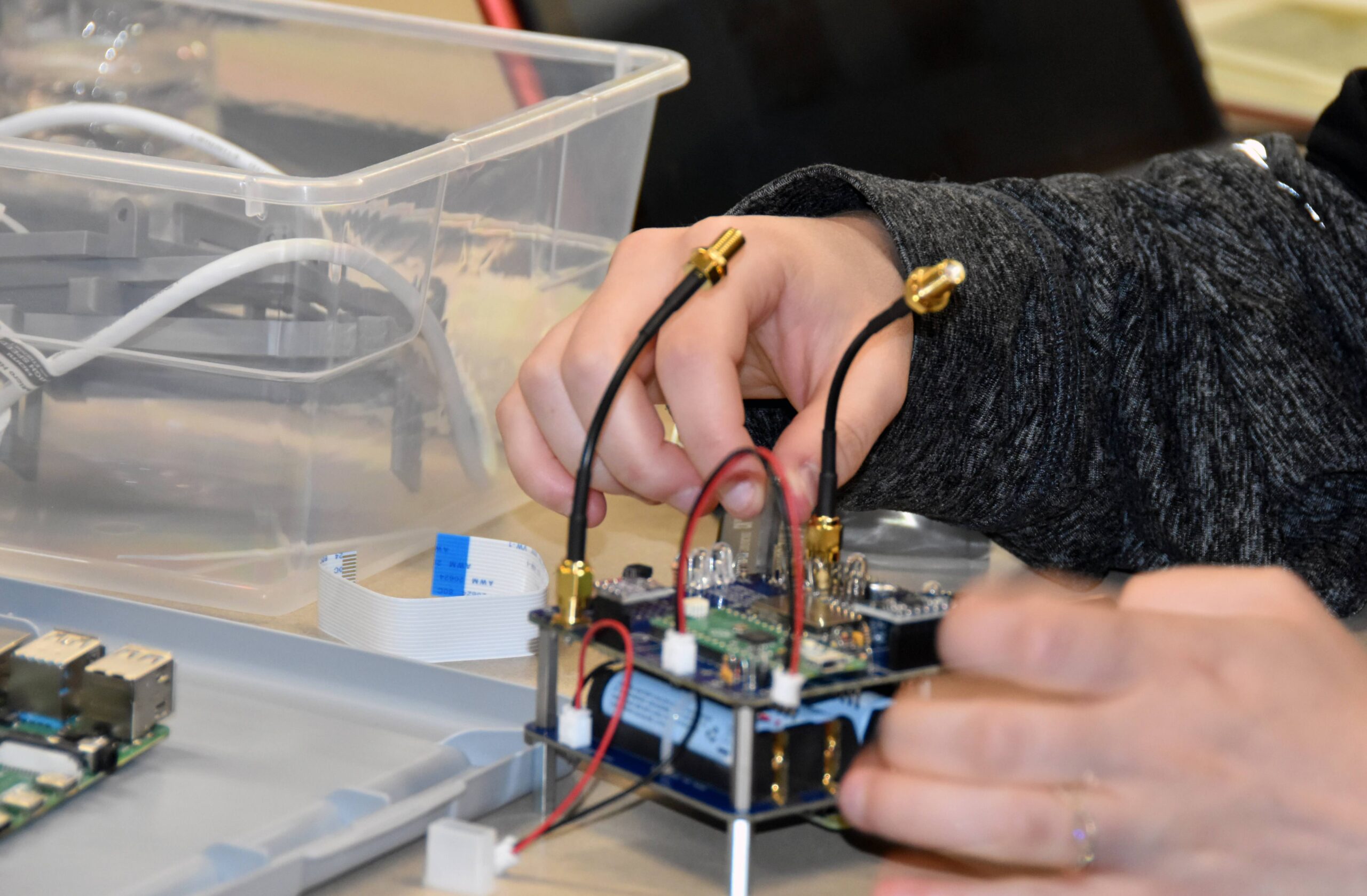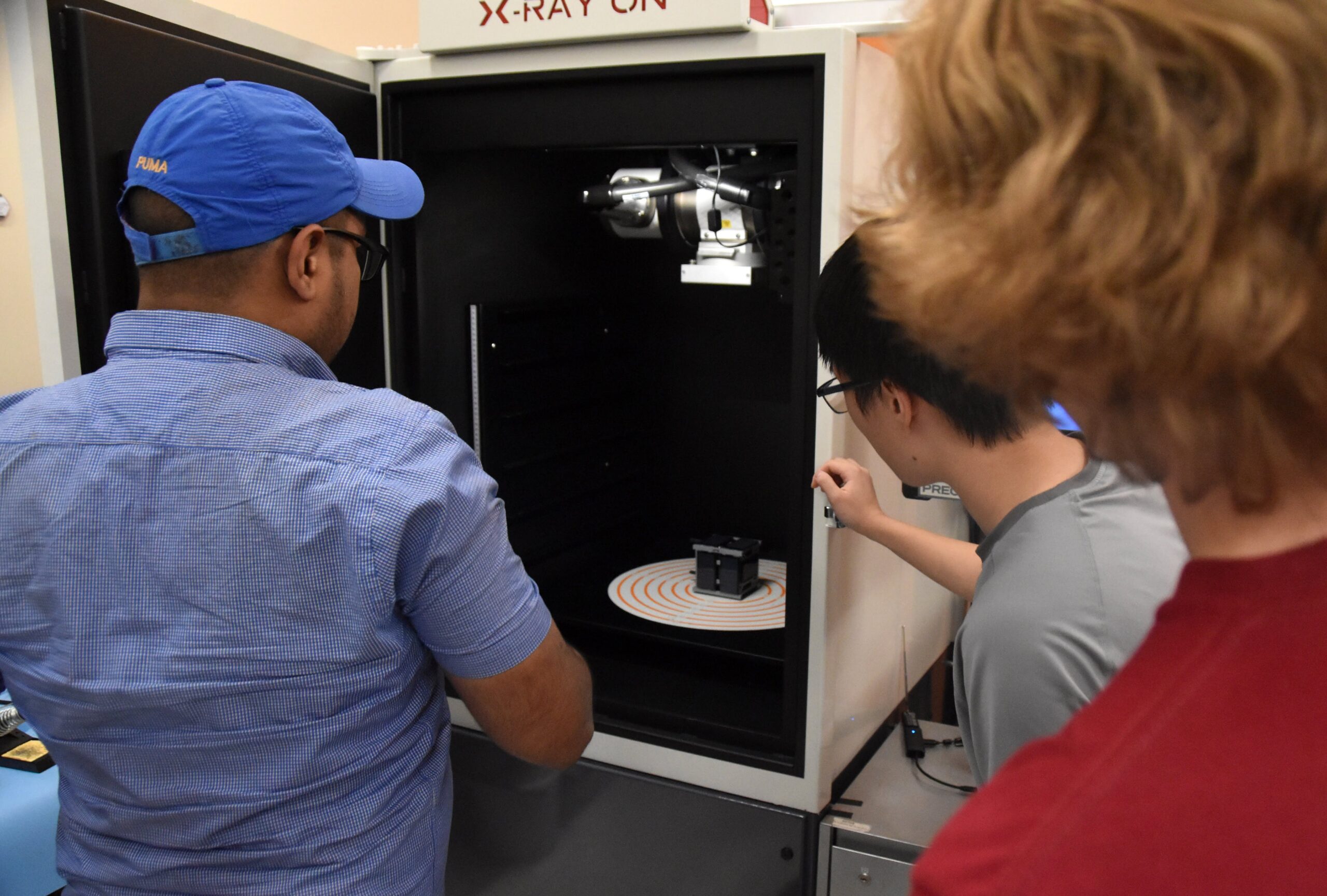Our Programs
Over the course of our 3-day workshop, we’re offering more than just lectures! Dive into engaging lab challenges and hands-on activities designed to enhance your learning experience. Explore the full schedule and discover all the exciting activities by clicking the link below!
Schedule
Workshop Basics: Soldering tutorial
We will go over the basics of soldering electronic components. This is an essential skill needed for working on any complex electronics project, like the CubeSatSim! Soldering equipment like irons and solder wire will be provided.
Workshop Basics: RF tutorial
We will teach you the basics of radio communication to get you up-to-speed on how to set up your satellite’s ground station on a Raspberry Pi. We will also go over the necessary drivers and other software needed for this. RTL-SDRs and Pis will be provided.
Opening remark and workshop overview (08:30 – 09:00)
- Small satellite workshop 2025 Intro
- Speaker: Dr. Ovidiu Daescu & Dr. Kangkook Jee
Lecture 1 (09:00 – 10:00)
- How has a system security geek become a space enthusiast?
- Speaker: Dr. Kangkook Jee
Introduction to small satellite in LEO (Dr. Kangkook Jee)
- Introduction to basic concepts
- Small satellite operational lifecycles
Small satellite components overview (Dr. Kangkook Jee)
- CubeSat design and specification overview
- Basic components for small satellite (CubeSat)
[Hands-on] Building your own CubeSat I (Agastya Bose, Timothy Sweet)
- Introduction (building guide)
- Hardware component assembly
- Software image installation
[Hands-on] Building your own CubeSat II
- (Local) Ground station set-up
- Hardware component assembly
- Software Image setup
- RF Communication between CubeSatSim and Ground station
Satellite software and programming interface (Dr. Kangkook Jee)
- On-Board Computer (OBC) and ground system overview and programing interface
- Commercial and open-source solutions
- Lab challenge 1
Basic RF transmission and antenna theory (Dr. Kangkook Jee)
- Modulation and Demodulation
- Space RF communication
- SDR programming intro
[Hands-on] Advanced Telemetry Tracking
- Lab activity 2
Introduction to CHESS research (Dr. Manuel Quevedo-Lopez)
Physical and structural considerations (Dr. Robert Baumann)
- Small satellite form factors of Shielding and insulations
- Launcher and launch time considerations
[Hands-on] Experimenting CubeSatSim under X-ray radiations
Space debris and De-orbit systems (Dr. Ovidiu Daescu)
- Space and orbital debris
- Space governance
- De-orbit systems
Workshop closing (Dr. Kangkook Jee)
- Student discussion
- Participant survey
- Closing remarks
Lab Challenges
Lab 1. Build and Communicate with Your CubeSat
- Overview
Embark on an exciting journey to set up and communicate with your CubeSat using advanced telemetry and modulation techniques. This hands-on activity involves leveraging a Raspberry Pi 4 and an RTL-SDR receiver to receive and decode satellite signals.
- Objective
Decode FSK telemetry to interpret CubeSat data.
Decode BPSK telemetry for faster data transmission analysis.
Explore SSTV transmission, including image decoding from the CubeSat.
Lab 2-1. Analyze Sensor Data with Python
- Overview
The primary goal of this lab is to explore and visualize satellite sensor data stored in multiple CSV files. By plotting the time-series measurements collected from various onboard sensors, students will analyze trends, identify anomalies, and extract meaningful insights about satellite performance and the environmental conditions it monitors.
- Objective
Use Python libraries to process and plot time-series data from various sensors, enabling better understanding and analysis of telemetry data.
Lab 2-2. Calculate Solar Power Generated with Python
- Overview
This lab focuses on learning how to calculate and analyze solar power generation using Python. Students will process voltage and current measurements stored in CSV files, compute both instantaneous and cumulative power, and visualize the results through detailed plots. The lab also aims to provide a practical understanding of how spatial orientations impact solar power generation.
- Objective
Calculate instantaneous and cumulative power using Python and visualize trends to understand the impact of orientation on solar energy generation.
Lab 3. Angle Position (Roll, Pitch, Yaw) Determination of the CubeSatSim
- Overview
This lab focuses on understanding attitude determination, a key aspect of satellite operations. Using the CubeSatSim platform equipped with IMU sensors, students will collect accelerometer and gyroscope data to estimate the satellite’s orientation in space.
- Objective
Learn how to utilize IMU sensor data for attitude determination by processing and analyzing CSV data to calculate satellite orientation, while gaining practical experience in handling real-time data and verifying results using Python.
Lab 4. Hacking Satellite Signal and Random Radio Signal Interference – Eavesdropping
- Overview
This lab is a competitive exercise simulating a satellite overpass event. Teams will attempt to collect as much data as possible from CubeSatSim signals using a ground station, while also dealing with random radio interference and intentional disruptions from opposing teams.
- Objective
The goal is to collect the most data under challenging conditions by identifying satellite signals within the 420–450 MHz frequency range, adapting to interference while maintaining data integrity, and using SDR tools to analyze and record frequency, modulation, and data details.
Hands-on Activities
Build Your Own CubeSatSim
Students will assemble the CubeSatSim kit from AMSAT to gain practical satellite operation experience. The CubeSatSim supports five data transmission modes: APRS, FSK, BPSK, SSTV, and Morse code (CW). It features a BME280 sensor for temperature and humidity and a GY521 gyro sensor for acceleration and position.
After assembling the boards, frame, and solar panels (with THT components pre-soldered), students will use ground station software to communicate with the satellite and explore its transmission modes.

Space Radiation Effect Testing on CubeSatSim
In this activity, students will simulate space radiation effects by exposing the CubeSatSim to X-rays using an irradiation machine. They will measure radiation doses in centigrays (cGy) and test the satellite’s components under varying intensities. Students will also apply shielding, such as aluminum foil, to critical components to explore methods for reducing radiation exposure and protecting the satellite in space-like conditions.
